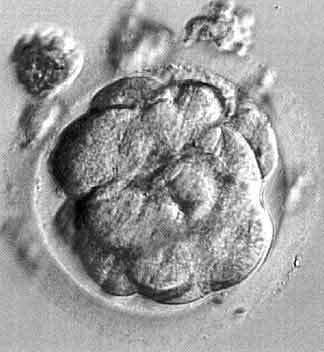High quality day 4 embryo from in vitro fertilization
This is a compacting morula
There are many cells and the cell borders are becoming fuzzy as the embryo “compacts”
With compaction it looks as though the cells are “melting together”
- A morula contains about 10 – 30 cells
- The morula stage is the final stage prior to formation of a fluid filled cavity called the blastocoel cavity
- Once the cavitation has occurred, we can see the fluid in the cavity between the cells and we call the embryo an early blastocyst
- Although morula stage embryos are usually seen on day 4 and blastocysts are usually seen on day 5, sometimes we have only morulas on day 5
- In that case, we do not know if the embryos are slower than average because they are weaker, or because they are healthy but just developing slower than average
- Transferring morulas on day 5 results in a reasonable pregnancy rate, although it is not as high as the pregnancy rate with blastocyst transfer on day 5
Embryo arrest at the morula stage is not uncommon, which is one reason that transfer at the blastocyst stage can be a beneficial IVF treatment strategy.







